Resuscitation Chart
In October 2015, the UK Resuscitation Council published new guidelines.
We have produced the chart below to illustrate the procedures.
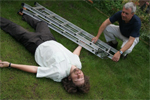
Danger
Check for danger.
Make safe – if necessary
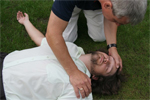
Response
Speak to the casualty. If no reply – gently shake and shout “Are you alright?”
If no response – shout for help.
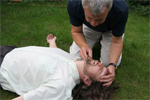
Airway
Open the airway by tilting the head back and lifting the chin.
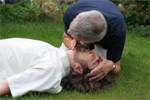
Breathing
Look, listen and feel for normal breathing (for up to 10 seconds). If the casualty is not breathing normally, dial 999 and ask for an automated external defibrillator (AED), if one is available – then start CPR. Be suspicious of cardiac arrest in any patient presenting with seizures and carefully assess whether the victim is breathing normally.
Circulation
Give 30 chest compressions at a rate of 100 – 120/minute, compressing the chest by 5 – 6 cm.
Continue alternating 30 compressions and 2 breaths until help arrives with a defibrillator.
If an AED arrives, switch it on and follow the instructions.
Minimise interruptions to CPR when attaching the AED pads to the victim.
Do not stop CPR unless you are certain the victim has recovered and is breathing normally or a health professional tells you to stop.
If there is more than one rescuer, change over every 2 minutes to reduce tiredness.
For courses in resuscitation, defibrillation, medical gases and a variety of first aid courses including
First Aid at Work and Emergency First Aid at Work courses,
please contact First Aid Training Associates or call 01508 570318.
First Aid Training Associates Ltd, 1 Forge Orchards, Mulbarton, Norwich NR14 8JH.


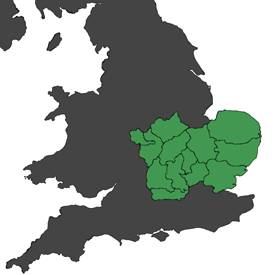 Click map to see more detail
Click map to see more detail